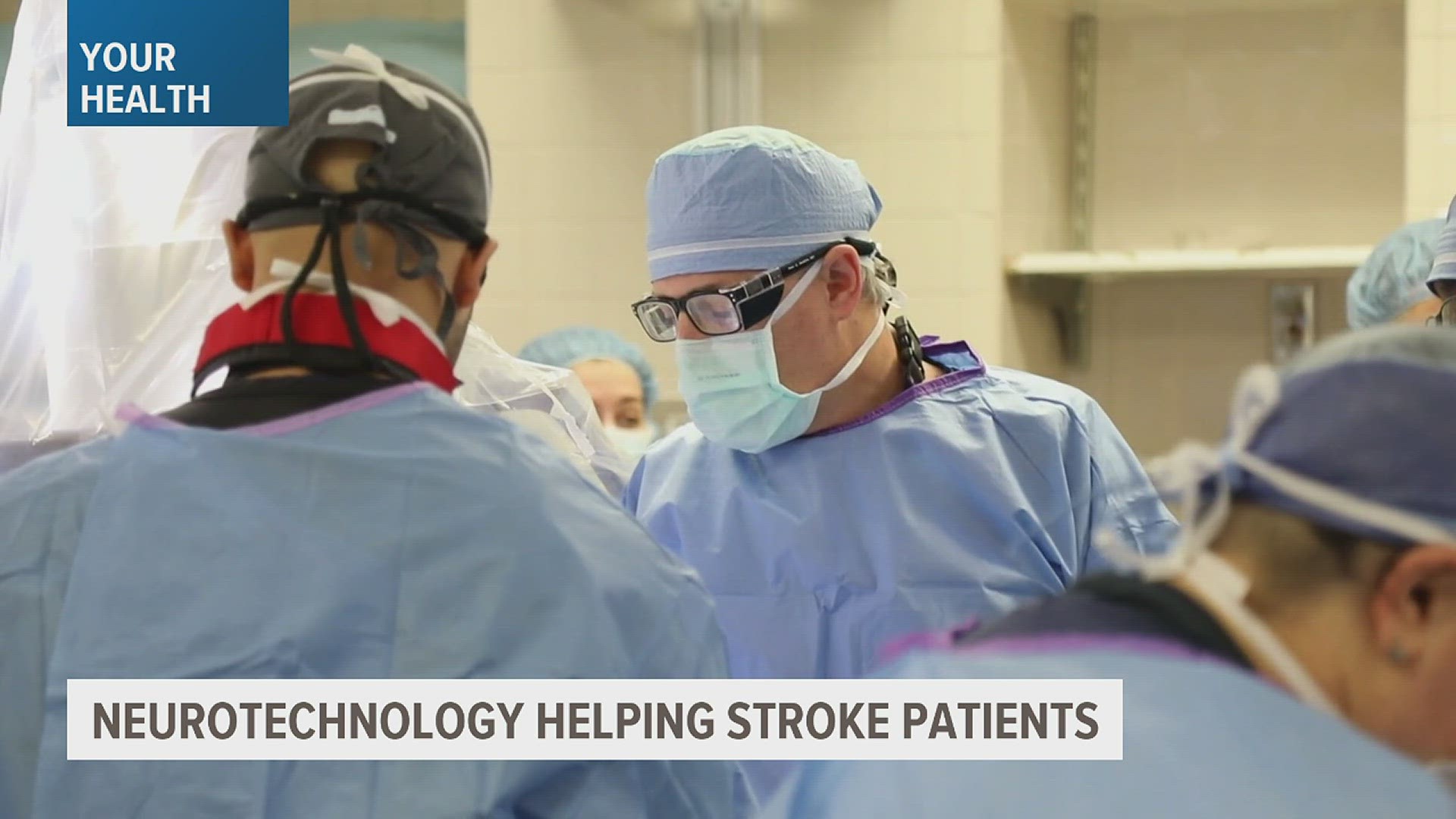PITTSBURGH — Every year in the U.S., almost 800,000 people will suffer a stroke – that’s one person every 40 seconds. About 140,000 will die from it. Some people will fully recover, but for many, they will live with a lifetime of serious disability, including lasting deficits in the ability to move their arms, legs and hands. But now, researchers are using neurotechnology to instantly give patients some mobility back.
Heather Rendulic was only 22-years-old when she had her first stroke. Unfortunately, four more followed.
“The fifth and final one was a massive stroke. The left side of my body was paralyzed. I live one-handed in a two-handed world,” Rendulic emphasized.
For eight years, Rendulic lost the ability to move her left arm and hand, until she became the first person to enroll in a study at the University of Pittsburgh Medical Center using electricity to reconnect her brain to her arm.
“Think of it as the electrical wires between the brain and the rest of the body are cut from the stroke,” neurological surgeon at the University of Pittsburgh Medical Center, Peter Gerszten, MD, MPH, FACS explained.
By implanting two thin neuro electrodes on the top of the spinal cord in the neck area, neurosurgeons can reconnect the signal.
“It allows the patient to communicate, once again, between the brain and the rest of the body,” he added.
Within minutes, Rendulic’s brain had found a new way of getting impulses to her muscles.
Dr. Gerszten said, “Even at night, when she went home and the device was turned off, she continued to improve.”
“It was just so amazing because I was moving my arm and hand in ways that I hadn't in almost a decade,” Rendulic exclaimed.
The trial lasted for four weeks and Rendulic’s implant was removed. She says as soon as it’s FDA approved, she wants it.
This technology is already FDA-approved to treat chronic pain. The next generation of this treatment will work to make it a device that will not need to be removed. Researchers are hoping FDA approval will make this the first treatment to effectively treat paralysis for people years after having a stroke. Giving new hope to people living with impairments that would otherwise be considered permanent.
Contributors to this news report include: Marsha Lewis, Producer; Kirk Manson, Videographer; Roque Correa, Editor.
Watch more news, weather and sports on News 8's YouTube channel

